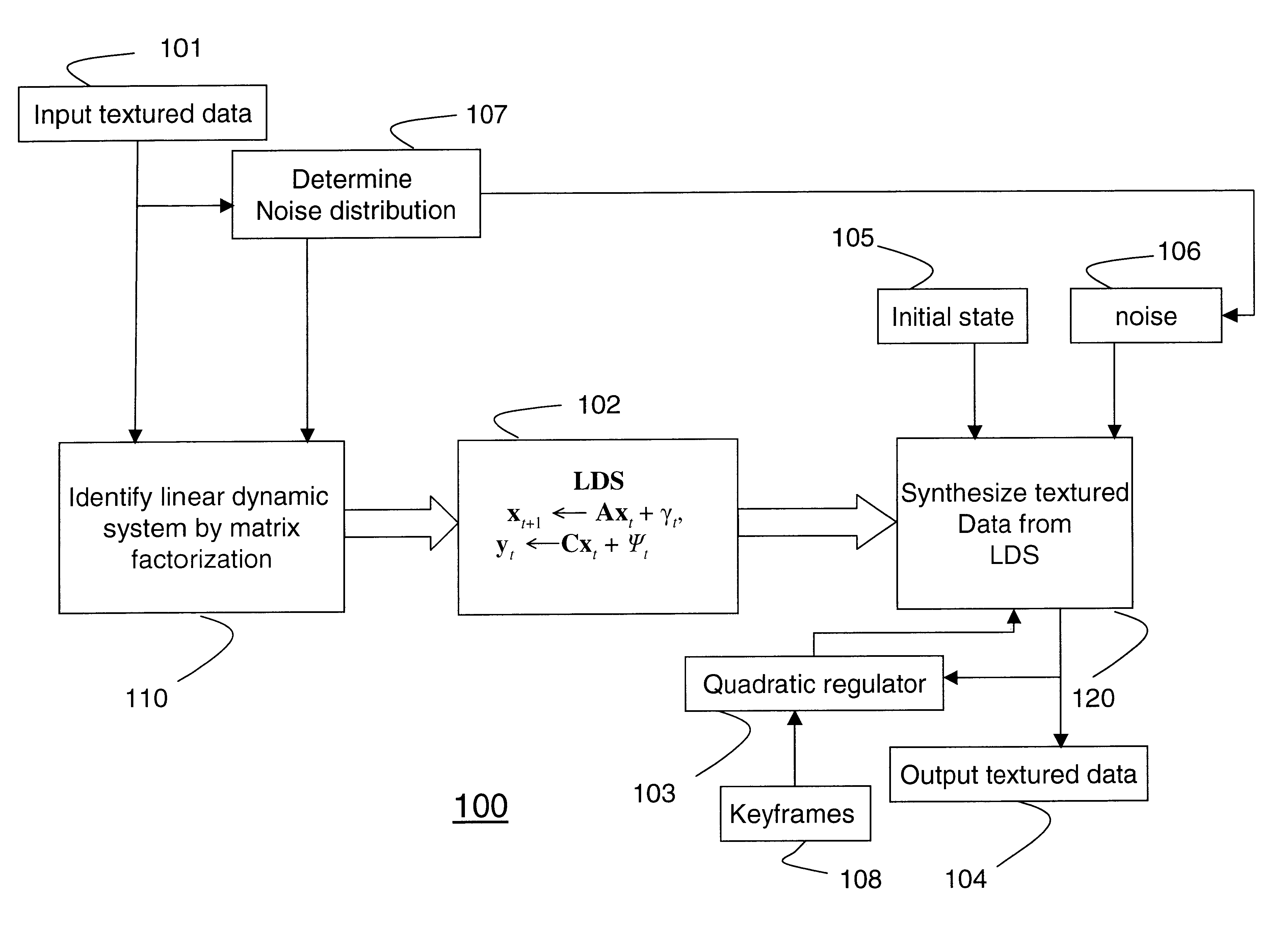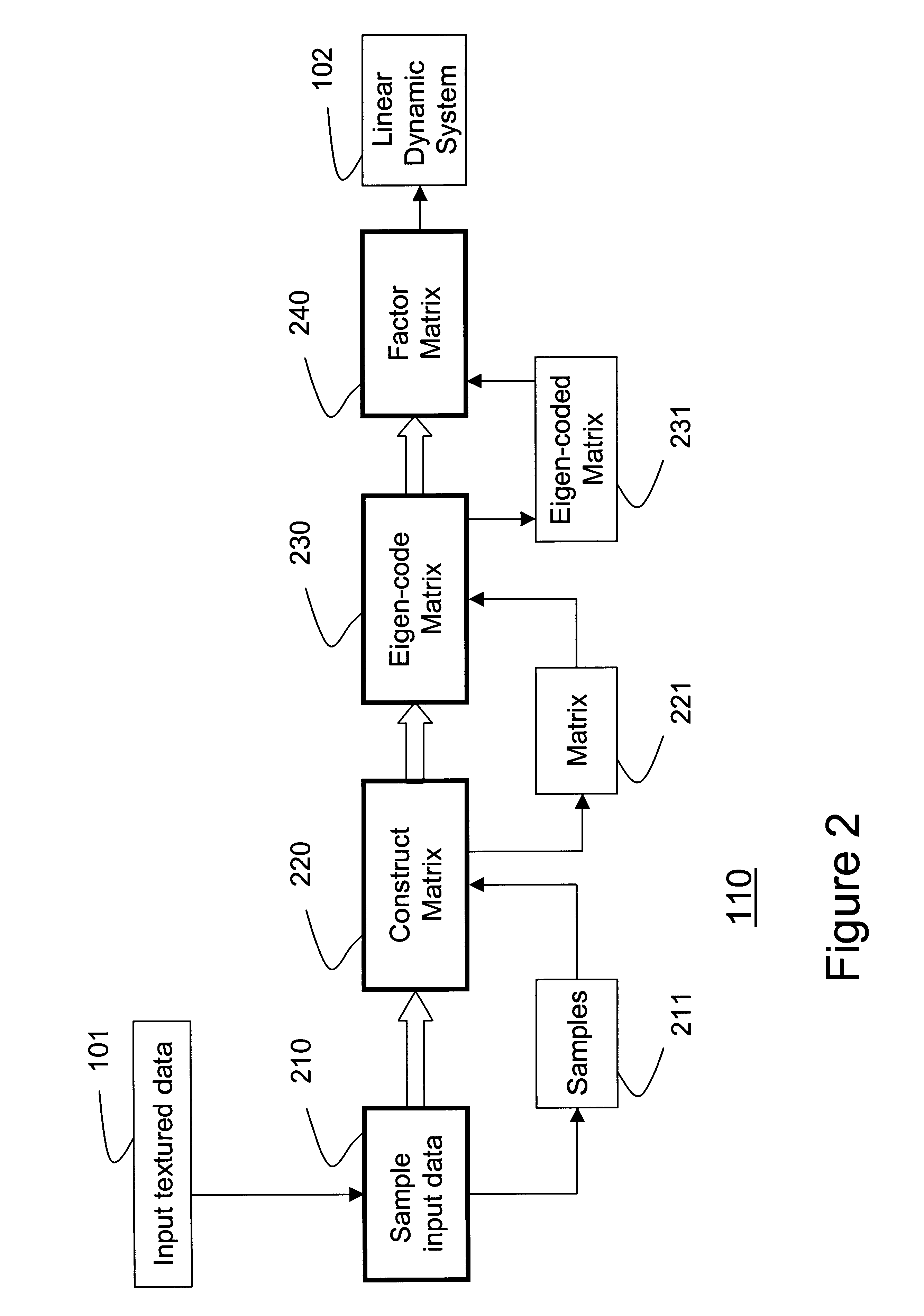Analysis, synthesis and control of data signals with temporal textures using a linear dynamic system
a dynamic system and data signal technology, applied in the field of processing data signals, can solve the problems of system forced, noise has a higher probability of moving the state, and curves can be quite complex
- Summary
- Abstract
- Description
- Claims
- Application Information
AI Technical Summary
Benefits of technology
Problems solved by technology
Method used
Image
Examples
Embodiment Construction
As shown in FIG. 1, the invention provides a method 100 for processing temporal textured data signals according to the invention. The method 100 operates in two basic steps, system identification 110 and data synthesis 120. The method takes as input time-invariant, textured data 101. The input data are sampled to construct an observation matrix which is eigen-coded and factored using a singular value decomposition to identify 110 a linear dynamic system (LDS) 102 that models the time-invariant dynamics of the input data 101.
The linear dynamic system 102 is then controlled using a quadratic regulator 103 to synthesize essentially an unlimited amount of novel output textured data 104 that are substantially indistinguishable from the input data 101. During synthesis 120, the LDS 102 is run forward from an initial state 105 with a random noise signal 106 generated from estimated noise distributions 107 of the input data 101. In addition, the LDS 102 can be run forward or backward from k...
PUM
 Login to View More
Login to View More Abstract
Description
Claims
Application Information
 Login to View More
Login to View More - R&D
- Intellectual Property
- Life Sciences
- Materials
- Tech Scout
- Unparalleled Data Quality
- Higher Quality Content
- 60% Fewer Hallucinations
Browse by: Latest US Patents, China's latest patents, Technical Efficacy Thesaurus, Application Domain, Technology Topic, Popular Technical Reports.
© 2025 PatSnap. All rights reserved.Legal|Privacy policy|Modern Slavery Act Transparency Statement|Sitemap|About US| Contact US: help@patsnap.com



